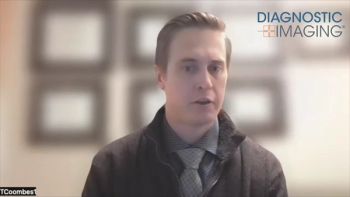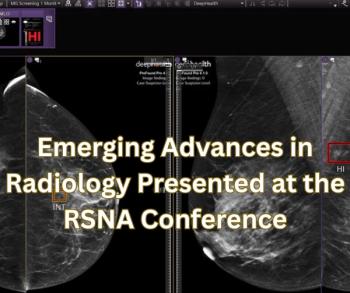
‘Magic formula’ accurately predicts fracture risk in osteoporotic women
Researchers have developed a mathematic formula to predict a woman’s risk of osteoporotic fracture. The equation has proved 75% accurate and will allow physicians to tailor their treatment strategies to help women prevent fractures of fragile bones, according to a study in the October issue of Radiology.
Researchers have developed a mathematic formula to predict a woman's risk of osteoporotic fracture. The equation has proved 75% accurate and will allow physicians to tailor their treatment strategies to help women prevent fractures of fragile bones, according to a study in the October issue of Radiology.
"Approximately 45% of women have different levels of bone mineral density between their hip and their spine, leading to uncertainty as to how physicians should assess their future fracture risk," said lead author Margaret Joy Henry, Ph.D., a statistician in the department of clinical and biomedical sciences at The University of Melbourne, Australia. "We have derived an equation that successfully predicted 75% of fractures in women, two years after their initial measurements were taken."
Women with osteoporosis have brittle bones that are more likely to break as a result of a minor bump or fall. Bones affected by osteoporosis are less dense than normal bones, due to larger pores in the bone, reduced calcium levels, and fewer blood vessels.
The equation developed by Henry and colleagues takes into account a variety of risk factors, not just bone mineral density. A patient's likelihood of falling, low bone mass, excess or low body weight, and additional factors are combined into a single formula that can indicate to a physician how serious a woman's fracture risk may be. Treatment strategies may then be targeted on the basis of a woman's predicted outcome.
A total of 231 elderly women who had sustained a low-trauma fracture of the hip, spine, humerus, or forearm during a two-year period were recruited, as well as 448 elderly women who were selected randomly and had not sustained a fracture during the same two-year period.
The equation was developed based on measurements obtained in this study population. It was then tested in a third group of women from the community, who were randomly selected to be followed for a six-year period to determine the success of the formula for predicting fractures.
By using the formula, 75% of fractures were successfully predicted two years after the baseline measurements were obtained. The authors also discovered that heavier body weight seemed to increase the force applied to the skeleton during a fall. Findings of most previous studies indicated that lighter body weight led to increased risk of fracture, due to lower bone mass.
Development of this formula to predict future fracture risk is important because it will allow physicians to better adapt treatment strategies for women with osteoporosis, especially by taking into consideration different bone density measurements throughout the body.
A variety of treatment regimens can be used, including hormone replacement therapy, nonhormonal medicines, vitamin D and calcium supplements, and additional therapies such as calcitriol - an active form of vitamin D that improves the absorption of calcium from the digestive process.
"As the average age of the population increases, the number of fractures attributable to osteoporosis is set to increase dramatically," Henry said. "The ability to predict fracture risk, based on simple clinical measurements, will assist in targeting treatment for people at highest risk, thus helping reduce the burden of this disease."
Dr. Henry and colleagues are currently assessing risk factors in a large cohort of men to develop a similar formula for use in the male population.
For more information from the Diagnostic Imaging archives:
Newsletter
Stay at the forefront of radiology with the Diagnostic Imaging newsletter, delivering the latest news, clinical insights, and imaging advancements for today’s radiologists.




























